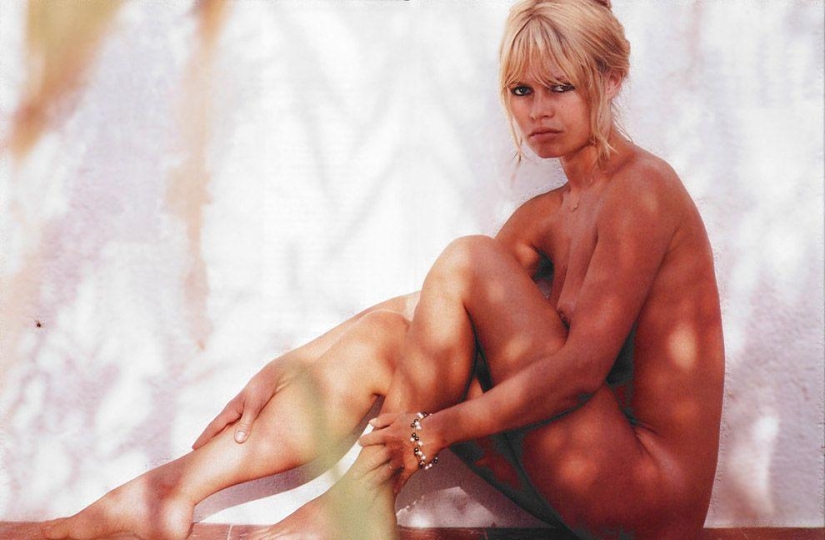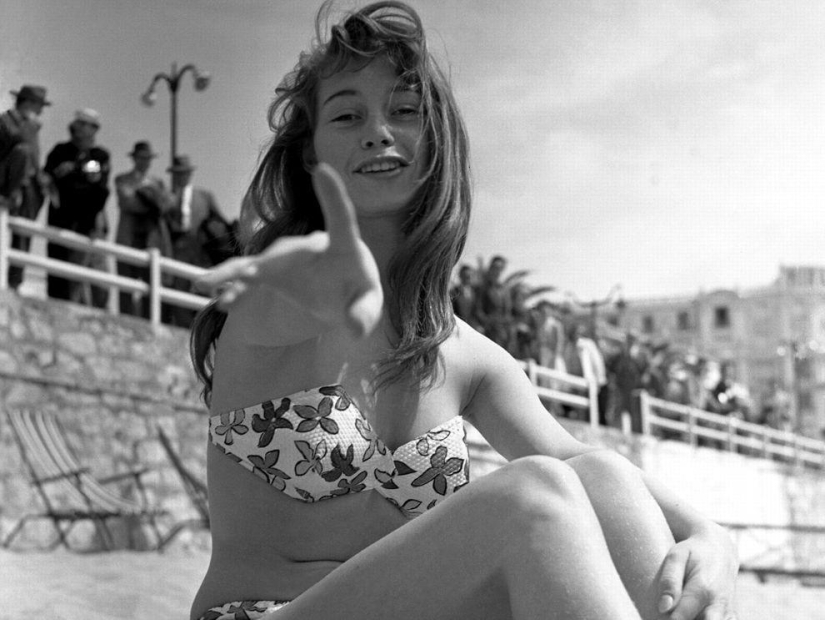15 main incarnations of Brigitte Bardot
Categories: Celebrities
By Pictolic https://pictolic.com/article/15-main-incarnations-of-brigitte-bardot.htmlOn September 28, 1934, the world saw the appearance of a star - Brigitte Anne-Marie Bardot. She was not just an actress, she became a phenomenon, the personification of the era. Her life is full of contradictions, and each of her incarnations is a reflection of different sides of her bright personality. From sex symbol to animal activist, Brigitte Bardot has left a deep mark on cultural history. We invite you to immerse yourself in the history of her multifaceted life and learn about the 15 main aspects of this unique woman.


Under the influence of her mother, Bardot and her younger sister began dancing from childhood. Brigitte, who was not a bright student at school, but had natural plasticity and grace, decided to focus on her ballet career. In 1947, she passed the entrance exam to the National Academy of Dance and, despite strict selection and a limited number of places, was one of eight accepted for training. For three years she attended the class of Russian choreographer Boris Knyazev.

In 1949, 15-year-old Brigitte already participated in a fashion show at the invitation of her mother’s friend; in the same year she starred for the magazine Jardin des Modes (“Fashion Garden”). A little later, she appeared for the first time on the cover of ELLE magazine and was noticed by the aspiring director Roger Vadim.

The future star first appeared in films in 1952. Her 21-year film career spans over 50 films. Brigitte gained worldwide popularity thanks to her role in the 1956 film “And God Created Woman,” where she played the main character, the unbridled eighteen-year-old Juliette Hardy, rushing between several men. Historians consider the painting a harbinger of the sexual revolution of the 1960s.

In the 1950s, Brigitte was as much a sex symbol for Europe as Marilyn Monroe was for America. In 1995, she was ranked 9th on Empire magazine's "100 Sexiest Stars in Film History" list, and in 2011, she was named one of Men's Health magazine's "100 Hottest Women of All Time."

Despite her rather scandalous “sexy” popularity, in 1970 Brigitte was chosen as a model for the bust of Marianne, the symbol of France. Marianne is a national symbol and also the nickname of France since the Great French Revolution. She is the personification of the French national motto “Liberty, equality, fraternity”.
Busts of Marianne (and with them the bust of Brigitte) are a mandatory attribute of government agencies, courts and municipalities, and her images are placed on the French state seal, postage stamps and coins.

As for family life, things didn’t go so smoothly for the catwoman. In total, Brigitte was married 4 times, but the most remarkable, perhaps, will be the story of her second marriage to actor Jacques Charrier, with whom Bardot gave birth to a son, Nicolas, in 1960. Motherhood and home life were, to put it mildly, not to the star’s taste. When her son turned 2 years old, she wanted to leave her husband. After the divorce, she left the child to be raised by the Charrier family.
In his book of memoirs “Initials B.B.” Brigitte admits: she did not feel “great love” for Sharya and married him only because she was already expecting a child, which, by the way, she really did not want. When Nicolas was born, she “didn’t want to see him anymore.” In response to such statements, the ex-husband had no choice but to write his own “response” book, presenting Bardot on its pages as an eccentric beauty, a heartless mother and a vile wife.
According to Jacques, he wrote “the real story of their relationship” in order not only to protect his honor and the honor of his son, but also to slightly bring down Bardot, who in her memoirs created a far from true image of a fragile woman-angel, painfully seeking love.

In 1973, shortly before her fortieth birthday, Bardot announced the end of her film career and devoted her future life to the fight for animal rights. In 1986, she opened the Brigitte Bardot Foundation for the Welfare and Protection of Animals and earned 3 million francs by auctioning jewelry and personal items to support the foundation.
On September 28, 2009, on her 75th birthday, Bardot wrote an open letter asking actress Sophia Loren to stop wearing fur. According to her, this would be the best gift for her. Lauren never responded.
Now Brigitte lives alone in a villa with several hundred animals.

The animal rights activist is not at all so favorable to some representatives of people. Since the 1990s, Brigitte has repeatedly criticized immigrants and Islam in France, homosexuality and interracial marriage, as a result of which she was convicted five times of “inciting ethnic hatred.” On June 3, 2008, the trial ended with the largest fine of her life - 15,000 euros, resulting from a letter addressed to Nicolas Sarkozy, in which Bardot objected to the ritual cutting of the throats of rams at a Muslim festival without stunning and condemned the fast-growing Muslim community trying to take over power and spread their culture, values, way of life. The prosecutor said he was tired of charging Bardo because of racial animus.

During her career in show business, Brigitte recorded 80 songs and performed in various music shows. She recorded several hits with her lover Serge Gainsbourg, including the infamous “I love you... I don’t love you either” (Je t'aime... moi non plus). Even though the song was dedicated to Brigitte, she begged Serge not to release their recording, so a year later her vocals were replaced by Jane Birkin's.

It is known that Brigitte Bardot was the ideal of beauty for young John Lennon. As a symbol of the 50s, her name is mentioned in many popular songs, including hits performed by The Who (It's Not Enough), Red Hot Chili Peppers (Warlocks), Bob Dylan (I Shall Be Free), Elton John (I Think I' m Going to Kill Myself) and Nina Hagen (Frühling in Paris). In the musical film Across the Universe, based on 34 songs by The Beatles, her portrait adorns the dormitory at Princeton University, where the characters live.

Bardot is credited with introducing bikinis into fashion, wearing them at the Cannes Film Festival and in her early films. And also checkered clothes, appearing in a pink checkered dress at her wedding with Jacques Charrier, and a “sauerkraut” hairstyle: an intermediate option between a high ponytail and a babette, a careless half-tail on the top with falling bangs. Brigitte also contributed to the growing popularity of the resort towns of St. Tropez (France) and Buzios (Brazil) as holiday destinations.

In 2010, together with the house of Lancel, Brigitte created the BB handbag, which reflects her tastes, her life and her figure. This is the true embodiment of femininity and naturalness - just like Brigitte herself, who has not undergone a single plastic surgery in her entire life.

After another divorce (and sometimes while still married), Brigitte began to go out with almost everyone she met. Most of her lovers were young gigolos.

When Brigitte was diagnosed with breast cancer in 1983, she initially refused treatment, believing that this was her fate. Only thanks to her friend, actress Marina Vladi, who flew to St. Tropez to persuade her to start treatment, she eventually beat cancer.

The actress discovered her talent as a writer in the 70s. Since then, several publications have come from her pen. Among the books there are screen stars and memoirs. Autobiography “Initials B.B.” was published in 1996 and immediately received the status of a bestseller, quotes from which still appear in the media.
Recent articles

Most of us think that the color of the eggshell does not play any role and it is possible not to pay attention. But it's not and ...

The more we rely on technology, the more potential power hackers gain over us. It doesn't matter if their goal is to help or cause ...

Creating a good portrait is one of the most difficult tasks for any photographer. In order to make a really natural and memorable ...